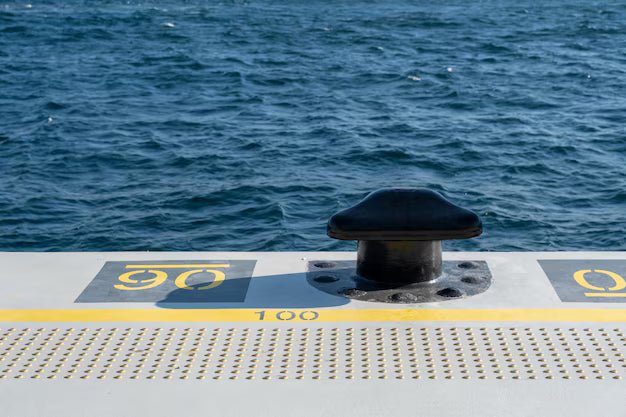Chemical storage areas carry more risk than most spots in a workplace. Whether it's in a warehouse, factory, or laboratory, these spaces deal with substances that can do some real damage if not handled properly. That includes where they're stored and how easy it is to keep people safe around them. Spills, splashes, and leaks are fairly common, and if the floors aren't up to the task, those chemicals can make the situation worse. A simple slip could turn into something far more serious when harsh substances are involved.
That’s where protective flooring makes a real difference. Putting the right surface underfoot helps guard both workers and the space itself. Among the options out there, anti-slip GRP decking stands out. It’s tough, long-lasting, and handles exposure to chemicals without breaking down. It also deals well with foot traffic, which is useful in busy working areas. Choosing the right kind of deck not only helps reduce slips, it keeps the area functioning safely without needing constant attention.
Understanding The Hazards In Chemical Storage Areas
The risk level in chemical storage doesn’t just come from the chemicals themselves, but how they’re handled and where they end up. Any area where liquid or powdered chemicals are moved, measured, mixed, or stored is going to face a mix of spills, leaks, and general wear from regular use. It’s easy to underestimate what a single leak can do when absorbed into the wrong flooring or when it triggers a slip that results in further damage.
Some of the most common hazards in these areas include:
- Slippery surfaces from chemical residue or spills
- Damage to flooring from corrosive substances
- Risk of slips and falls from water, oil, or liquid build-up
- Spread of contamination if chemicals aren’t contained
- Degradation of standard flooring over time due to exposure
If the floor isn’t suited to these kinds of situations, it ends up being the weakest point in the area. Bits of tile lifting, cracks forming, or slippery coatings wearing thin may seem like small issues, but all of them can add up to bigger problems. That’s why chemical-resistant and slip-resistant features are so important when upgrading or building a space like this.
Benefits Of Anti-Slip GRP Decking
Anti-slip GRP decking is one of those solutions that ticks more boxes than you might expect. GRP stands for glass-reinforced plastic, which means it’s fibreglass mixed into a plastic base. The result is a material that handles shocks, doesn't rust, and resists most acids and chemical spills with ease.
What makes it different is how it performs long after it’s been installed. Unlike metal, GRP doesn’t corrode or become unsafe when chemicals are present. Unlike plain concrete, it isn’t porous, so chemicals won’t soak in and lead to damage over time. It’s also designed with grip in mind, so even if there’s a spill, people have a much better chance of keeping their footing.
Key benefits include:
- Slip resistance even when wet or contaminated
- Strong performance under heavy foot traffic
- Resistance to oil, acid, and chemical damage
- No warping, rotting, or rusting
- Works indoors or outdoors
A real-world example of its usefulness would be in a storage room for cleaning products. Bottles are moved around all day, some containing bleach or strong degreasers. If one drops and the liquid spreads, a GRP walkway or flooring panel limits the risk of slipping and avoids long-term floor damage. That kind of reliability saves costs over time and avoids the constant need for patch-ups or replacement.
Choosing The Right Type Of Protective Flooring
Not all protective flooring works the same way, especially in chemical-heavy areas. The kind of materials used, the surface grip, and the build thickness all play a role in how well it performs over time. When dealing with chemical spills, the wrong flooring ends up causing more problems than it solves. It wears down faster, gets slippery, or absorbs harmful substances that spread risk even further.
GRP decking stands out because it’s made to take on these challenges. But even within GRP options, there’s variation. Some boards are better suited for high-traffic zones, while others are lighter and easier to fit in tight locations. Thicker pieces may seem stronger, but if they’re not needed, they just add more work during installation and upkeep.
Here are a few things to look out for when picking your protective surface:
- Anti-slip surface texture that offers grip without being too harsh
- Resistance to chemicals, including strong acids and cleaning agents
- UV protection if the space is exposed to sunlight, even through skylights or open areas
- Panel thickness based on expected traffic and weight loads
- Size options that reduce waste and keep fitting as simple as possible
For example, if you're fitting out a backup chemical store that only sees light use, you can get away with something thinner and easier to handle. But in a busy warehouse zone where drums are wheeled back and forth all day, you’ll need a thicker, more rugged version with extra grip.
On top of that, think about cleaning routines. Some surfaces don’t handle scrubbing well or lose their grip after repeated use. Choosing a product that stays grippy even after heavy maintenance can save you effort and money later down the line.
Installation And Maintenance Tips
Getting GRP decking into place isn’t a difficult task when it’s done properly. The key is preparation. Skipping some early steps can lead to gaps, movement, or weak spots that cause bigger problems over time.
To get the most out of the installation, follow this basic process:
1. Check and clean the base area – Whether it’s concrete, metal, or wood, it needs to be clear of debris, grease, or flaking surfaces.
2. Dry it fully – Any leftover moisture will hurt bonding and may trap water underneath.
3. Measure twice – Plan where each board or panel will go, leave space for drainage if needed, and keep joints neat.
4. Use the right fixings – Screws, bolts, or adhesive should suit both the GRP and the surface it’s attaching to.
5. Firm fit – Press or secure each section tightly so there’s no give underfoot.
Once the decking is in, proper care helps make it last longer. Routine cleaning removes dust, residue, or spills that could make it slippery. Mild detergent and a hose usually do the trick, though stronger degreasers can be used when needed, as long as they’re suitable for GRP.
Avoid oil-based cleaners or solvents as they can affect the grip or damage the surface over time. If you spot any parts lifting or showing wear, swap them out early rather than leave them to break down fully. Regular checks every few months help spot problems before they cause accidents.
Long-Term Safety Starts From the Ground Up
Keeping a chemical storage area safe isn’t just about handling goods with care. It’s also about building an environment that doesn’t add more risk to the job. Flooring may seem passive, but it’s one of the first things that affects worker safety, especially when liquids are involved.
By choosing a flooring system that’s resistant to spills, offers steady grip, and needs little repair, you’re setting the scene for longer-lasting safety. Workers get peace of mind, and the business avoids unexpected downtime from flooring damage or cleanup. Even on quieter days, having a stable surface can cut down on trips or minor injuries that stack up over time.
The right decking can also support better storage design overall. From organising drums to defining walkways, a good surface helps keep areas clear and easy to manage. When everything has its place and the floor helps guide movement instead of getting in the way, it’s just easier to keep the space under control. And with chemical handling, that makes a big difference.
Keep your storage area safe and durable by choosing the right surface underfoot. Our proven anti-slip GRP decking is designed to handle chemical exposure and heavy foot traffic without compromising grip. Rely on Slips Away to support a safer, more reliable working environment.














